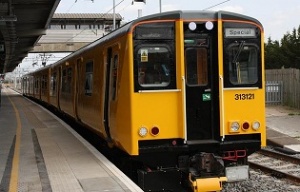Network Rail ERTMS testing takes off

Network Rail’s testing programme for cab signalling has enjoyed a successful start and has entered its second phase at the test centre in Hitchin.
The European Rail Traffic Management System and its signalling component ETCS (European Train Control system) will form the basis of future signalling schemes on the network.
Starting with an overlay on the Great Western main line in CP5 and the southern end of the East Coast main line in CP6, ETCS will revolutionise the way trains are run in Britain; bringing new levels of control, capacity, efficiency, economy and safety.
Network Rail’s client Simon Whitehorn said: “ETCS will have a huge impact on the railway and it’s vital we thoroughly test our equipment to get it right first time.
“Testing has gone very well and even in the first few days we were able to get the the cab and trackside equipment communicating and complete the planned tests.
ADVERTISEMENT
“The kit on the train is supplied by SSL, and therefore it was their trackside equipment that was first in line for testing. That has been completed successfully and we’re now in the process of testing Infrasig’s equipment.
“Switching the test facility on was a big moment for the team and it’s a big step towards eventually rolling cab signalling out across the country.”
The ETCS National Integration Facility (ENIF) at Hitchin utilises a five-mile stretch of the down line on the Hertford Loop between Molewood Tunnel and Langley South junction, controlled from a new structure in the former Hitchin goods yard. The test facility will be used by Network Rail for the next 18 months to examine four suppliers’ trackside ETCS equipment, using a converted Class 313 laboratory train.
Siemens and Ansaldo’s trackside equipment will follow in the testing programme, and Network Rail’s work at Hitchin will continue until the track and train are handed over to the Thameslink programme. This will allow them to test systems in advance of equipping the line from St Pancras to Blackfriars with ETCS and automatic train operation.
ETCS provides train drivers with a target speed, including movement authority, on a screen in the cab. The train ‘knows’ where it is through a combination of trackside equipment and on-board sensors, while instructions from the control centre are conveyed through the GSM-R (Global System for Mobile – Railway) signal.
By signalling each train according to its braking and accelerating capabilities, it will allow more capacity to be squeezed out of the current network, and also bringing considerable cost savings over traditional lineside resignalling schemes.

